Data is wealth. We secure our data with utmost care as we know its importance. Normally, we store the data on our PC or on an external hard drive. We store the necessary documents on cloud drives for better accessibility. As cloud storage has become cheaper and secure, most people are ditching hard drives and opting for cloud storage.
Our data accumulates over time. Manually, backing up the data once a week or month might be hard. We may forget it and bury it in the busy aspects of our lives. In such situations, we need an efficient solution to back up the data regularly and automatically.
Duplicati is a free backup software for both personal and professional use. It is an open-source application available free of cost.
How to configure Duplicati Backup for online backups
Duplicati is designed for online backups and you can use it to store encrypted backups online. It works with standard protocols like FTP, SSH, WebDAV as well as popular services like Backblaze B2, Tardigrade, Microsoft OneDrive, Amazon S3, Google Drive, box.com, Mega, hubiC. Also, you can back up the data locally.
The procedure to use Duplicati as a personal backup solution and save a backup is simple:
- Launch the application
- Click on Add Backup
- Then, select Configure a new backup
- Set the encryption level and password
- Now, select Backup Destination and Source Data
- Then, schedule automatic backup frequency
- Set the General options and Save
- Then click on Run now to run backup
To get into the details, after installing Duplicati, launch the program. It opens as a web page on your default browser with http://localhost:8200 as its address. It opens in your default web browser because it is designed as a web-based interface.
To save a backup, click on Add backup in the sidebar of the Duplicati webpage.
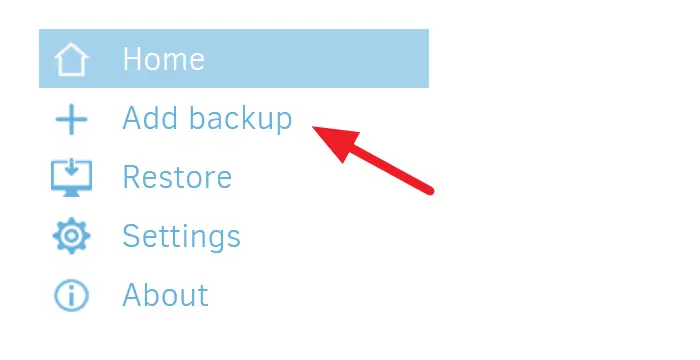
You will see General backup settings where you need to enter the title of backup in the Name textbox and description if any. Select the type of encryption from the encryption drop-down menu and add a password for backup in the passphrase textboxes.
You need not enter a password if you select no encryption.
Click on Next once you are done with the details.
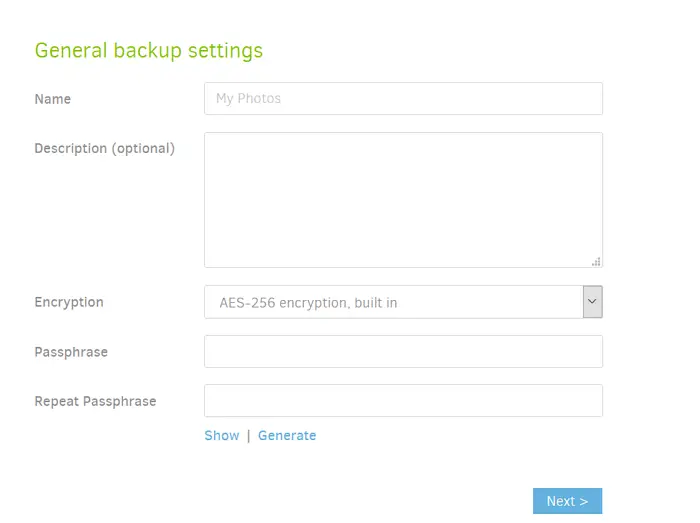
Now, you will see the Backup destination page where you need to choose where to save the backups. You can choose cloud storage like OneDrive, Google Drive, etc, or store them on the local drive using the Storage Type drop-down menu. Select the local path, if you chose a local drive or enter the username and password of your cloud drive using the Username and Password text boxes.
Once, you are done with them, click on Test Connection to test if you have set the destination correctly. Click on Next to proceed further.
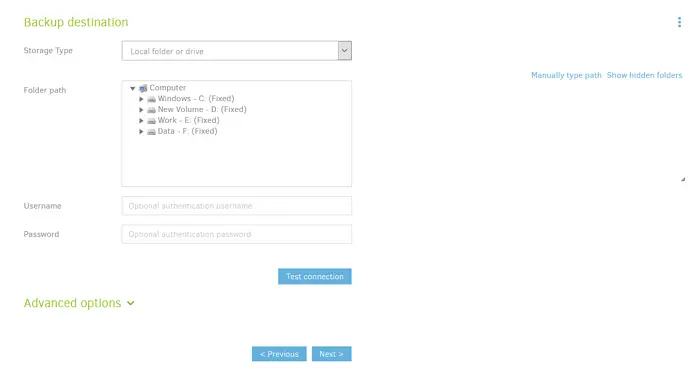
After the backup destination, you have to set up the location from where you want to backup data. Select the folder and click on Next.
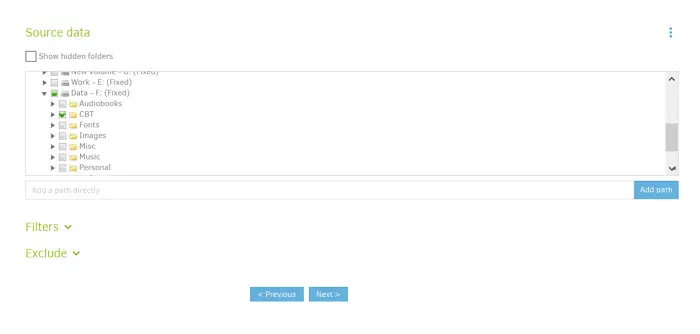
It is time to schedule the automatic backups. Set the time and days as you want and click on Next.
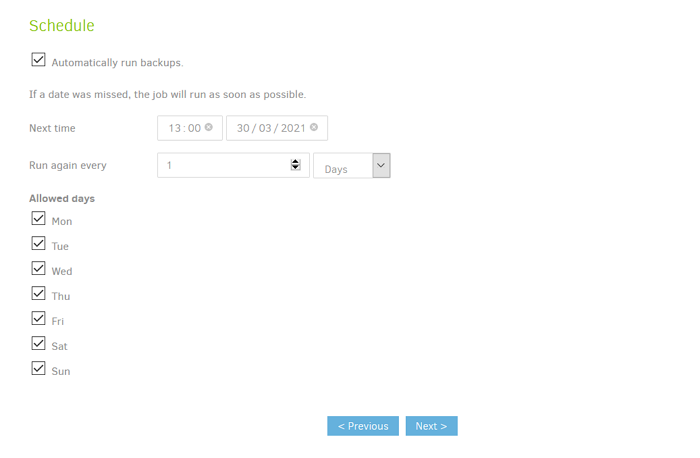
Now, you will see the General options page where you need to specify remote volume size. Remote volume size is nothing but the file size of each partial file you backup. It is recommended to leave it as it is to speed up the backup process. Then, select if you want to delete the previous backups or keep all the backups when a new backup takes place. After setting them, click on Save.
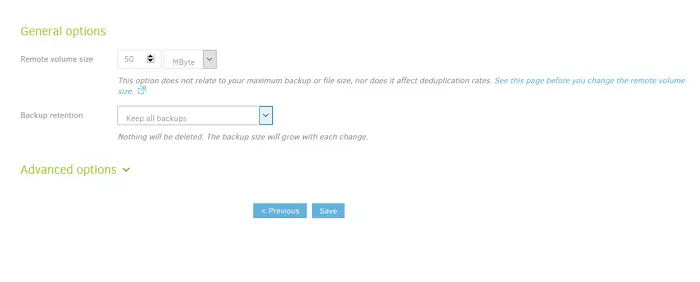
You have now configured a backup. You will see on the web page with the title you entered. Click on Run now to run the first backup.
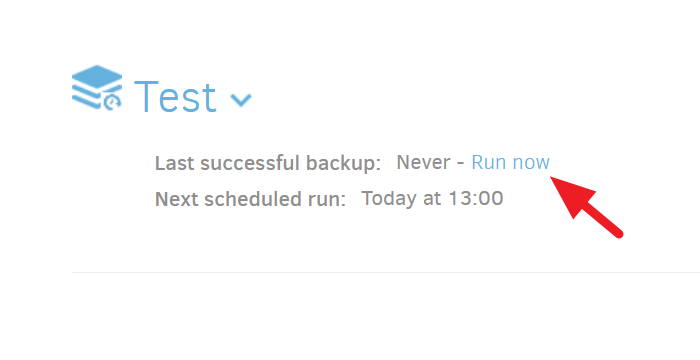
Your first backup will happen as you chose without any delay.
How to Restore a Backup using Duplicati
To restore a backup on Duplicati,
- Click on Restore
- Select the backup
- Then, select the files you want to restore
- Configure the restore settings and click Restore
Let’s see the process in detail.
To restore a backup in Duplicati, click on Restore in the sidebar.
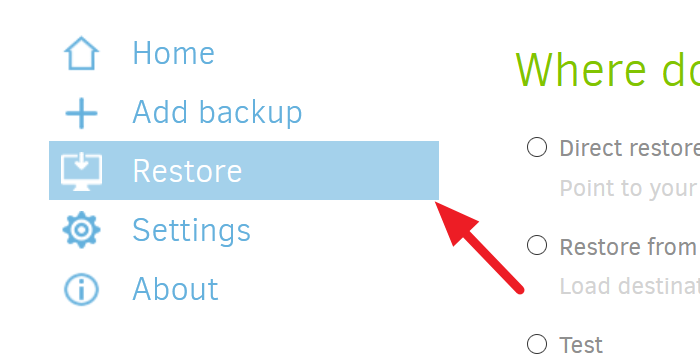
Then, select the option from where you wish to restore the data. You can restore from your backups or from a restore configuration. The most recent backup will also be in the options. Select an option by checking the radio button and click on Next.
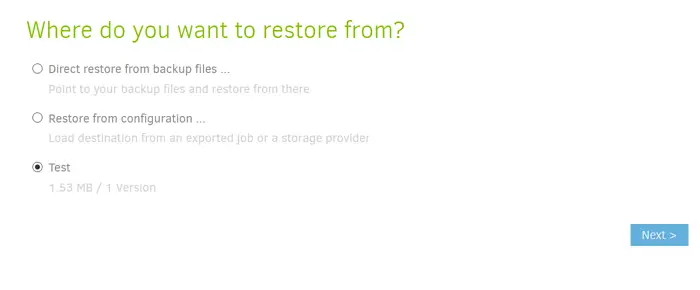
Now, you have to select the files you wish to restore. Check the button beside the files and click on Continue.
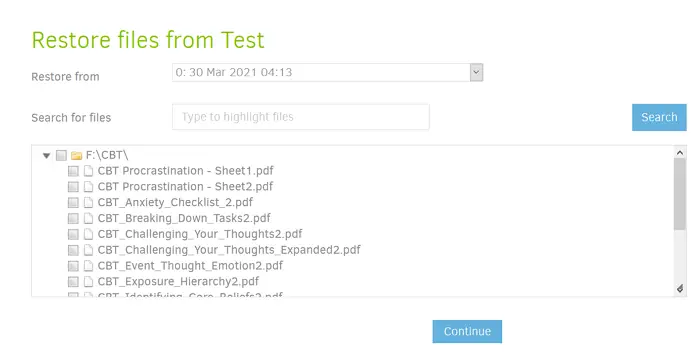
You will see the Restore options page. You need to select a location to restore the files. If you select the original location, you need to choose if the backup files should overwrite the existing files or save with a different file name. Check the box beside Restore read/write permissions to restore their metadata. Then, click on Restore.
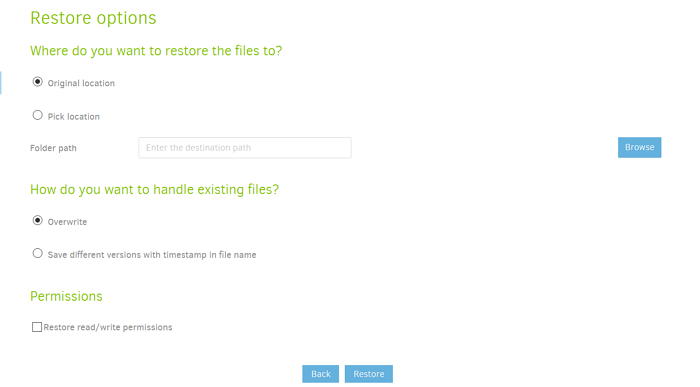
It will restore the backup in the location you chose.
Duplicati is a safe option to save your backups. The easy-to-understand and use interface is an additional advantage. A free version is available to download at duplicati.com.
We hope this guide helps you use Duplicati as your personal backup solution. If you have any suggestions or queries, please comment below.
Leave a Reply